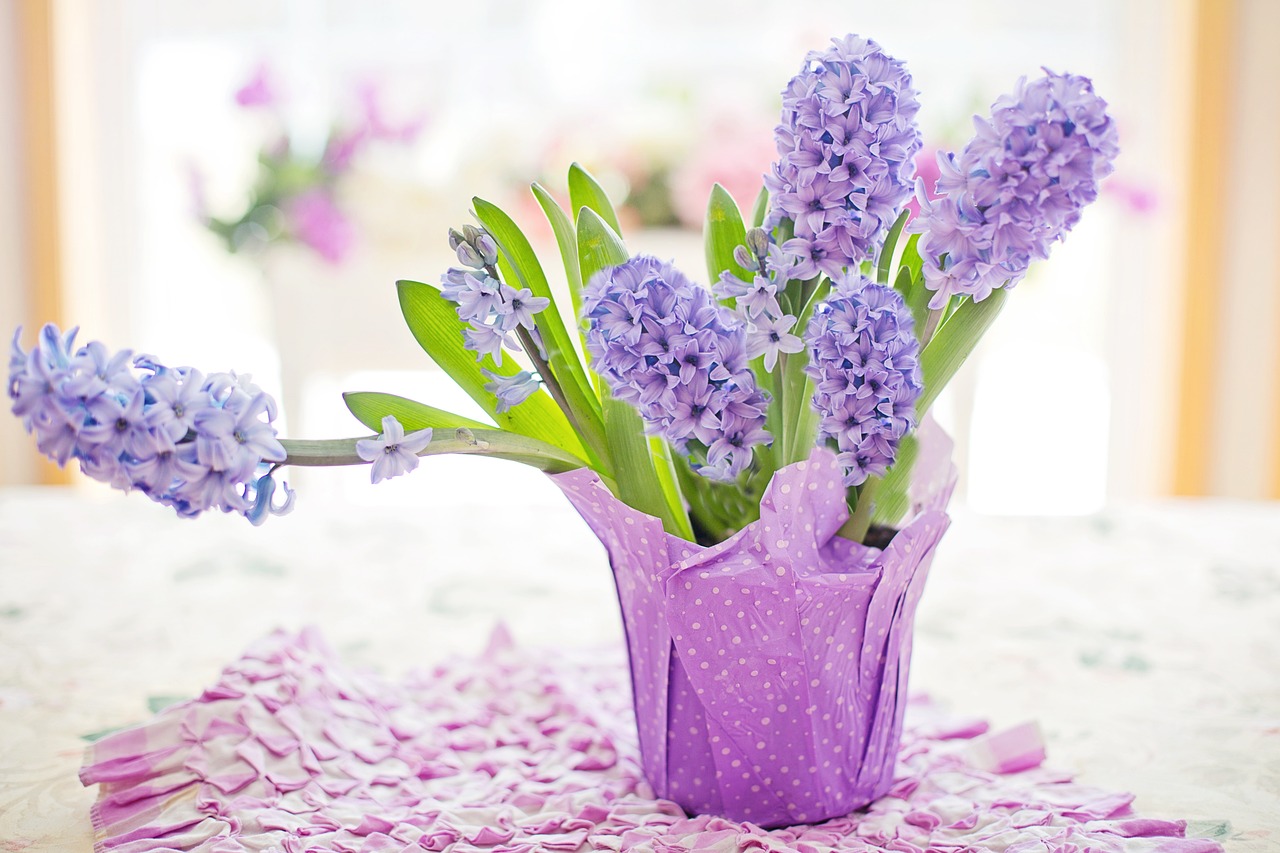
Hyacinth plant care advice
When someone sends you a bouquet of fresh flowers, it’s usually pretty clear that you should cut the stems, give them fresh water, and place them in the perfect spot in your home. Potted plants, however, require more care and consideration, but they make great housewarming, birthday, and Mother’s Day gifts. Whether you plan to send a hyacinth plant or receive one as a gift, here are some helpful tips for keeping your plant happy and healthy.
Understanding their life cycle
The first important point to remember is to know when you should expect your potted plant to flower. The hyacinth plant will typically bloom in spring, but even when not in bloom they remain attractive.
Select your plant
The fate of any potted plant and its profitability will largely depend on the condition of the plant at the time of purchase. Whether you buy it from your local florist or online or even from a nursery, make sure you get your money’s worth. The leaves of your hyacinth plant should be dark green and shiny, while the stem should also be strong.
The right vase
You will also need to select the right pot for your hyacinth plant to allow it to grow. When planted as a bulb, hyacinths should be planted at least 8 inches deep. With this in mind, you can easily assess whether your current boat is suitable or not.
Type of terrain
Hyacinths grow best in sandy soil. Avoid hard-to-penetrate clay as it does not offer sufficient drainage. An added benefit of growing hyacinths is that they do not require any type of fertilizer.
Finding a home for your hyacinth
This is probably the most important step of all. Once you’re happy with the pot, soil, and condition of your hyacinth plant, it’s time to find the perfect home for your new potted plant. Like freshly cut flowers, it is important to keep hyacinth away from heaters and direct sunlight. Hyacinths love indirect light, so place them in a well-lit room, but be careful of direct sunlight, as this will shorten the life of the plant.
Regular watering
Different plants require different amounts of water. Because sandy soil offers excellent drainage, you will notice that the soil may begin to dry out faster than some of your other houseplants. Water your hyacinth plant every two to three days. During the winter you will probably water less frequently, while in the summer you will water more frequently. Don’t let the soil dry out completely, but at the same time be careful not to overwater your plant. Too much water is not good for the roots. Of course, your pot should have drainage holes and you should place a drip tray underneath to catch excess water.
With these essential hyacinth plant care tips, you can be sure that this floral beauty will thrive. Although it will become dormant for a period, you can expect it to sprout and bloom again the following year if properly cared for.
